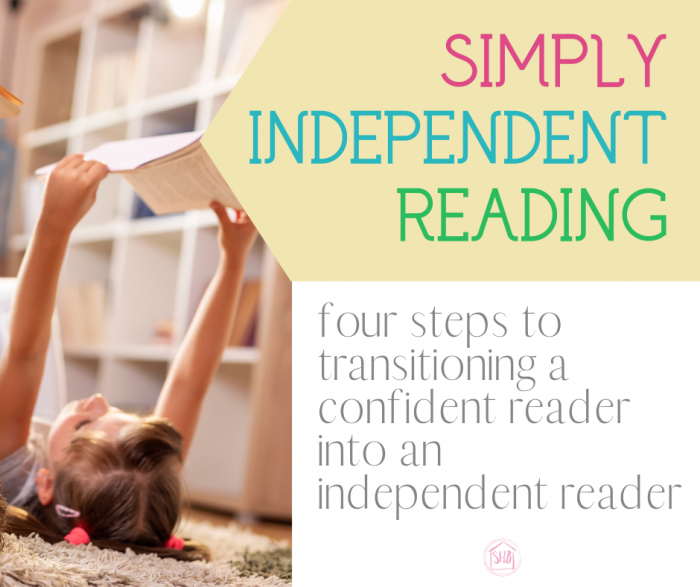
Lately I have noticed that we stand at a precipice. Once we step beyond it, we will be officially out of early-elementary years and into…e-le-ment-ary years? What does one call the later years of elementary? I always hear the term early-elementary and I can fully understand it. But not often is there a specific designation for the 4th and 5th grade years. Nevertheless, here we stand on the threshold between the two.
And, can I just be real for a moment? It excites me! Thrills me in all my optimistic homeschool teacher places! I know, I might be alone in that regard. But it is just SO neat to see my student ready for this.
On the other hand, she is ready for more independent learning. And I am NOT ready for that. We have been in this from the beginning, she and I. We have struggled through the harder parts of learning discipline (the tantrums, the tears, the triumphs gained at the expense of comfort). And now she is ready to take some of the reins herself and go for it.
As reluctant as I am to hold all the reins and pull tightly to our teacher-student connections, I know she is ready. We have been working in the last year and a half of her schooling to ensure she is.
So, as I look back on this road we have walked, I noticed some things I did almost unintentionally to prepare her for this independence. These are specifically related to reading because I believe confidence and independence in reading will hold students in good stead, no matter the subject.
This post may include affiliate links. If you click and make a purchase based on my recommendation, I get a small remuneration at no extra expense to you. I only recommend things I use and believe to be a blessing.
Read-Aloud
I often tell people that I could describe my homeschool day as a series of read-alouds. And it is. I am literally reading A-L-L D-A-Y. We use the Ambleside Online reading lists as a guide, alongside some free-reads.
In the course of our typical day, I will read an average of 3 separate books to my 2 students. We will be in the midst of reading an average of 6 books per student during any given week.
Now that I have said it, it seems a bit overwhelming. But somehow it works.
The way we make read-alouds work around here is simple: the Charlotte Mason practice of narration. For the uninitiated, narration at it simplest definition allows the student to demonstrate her attention to the reading by retelling the “story.”
We, by no means are perfect at narrations, but we have learned a LOT by doing them for the past 2 1/2 years with two very different students. Narrations can take many forms and I find them invaluable (and enjoyable!). For more information about how to do narrations in your homeschool, check out this book.
Read-Along
My students are incredibly confident readers (praise God!). But reading alongside my students is a practice I will continue, confident or not.
Reading along with my students is simply reading the same book at the same time, often taking turns to read. This method of reading together can start as soon as a student is officially a reader. A sight reader or a phonetic reader, either one, can benefit from the read-along method.
In the early days of reading along, I will trace my finger underneath the words as I read with the student next to me (or on my lap). When I get to words I know he can read, I double-tap and ask for him to read it. As the reader progresses, we can take turns reading sentences, then paragraphs, pages then chapters.

This is never tiresome, in my opinion! It never grows old and it helps to build confidence in the reader. Oh, how precious these times are.
For my almost 4th grader, we have been practicing reading-along with two or three books per term. This term, for one of them I have a copy of the book and she has a copy of the book and she simply reads along as I read aloud. For another we take turns reading pages or paragraphs.
Read Beside
As I said, the confidence in my elementary readers is abundant. They have begun asking to read some of their school books to me. And I have obliged with my 3rd grader this year. She has read entire books to me as I have sat and listened attentively.
This is a lead-learner activity that is almost as challenging to me as it is to her. I am often amazed at the narrations she can give after reading aloud to me that I, sadly, could not. My practice in attentiveness is necessary to ensure she is getting out of the readings what she ought.
Notice, I still require a narration from the books my student reads. The practice of doing this for all school books increases demonstration of reading comprehension. The students are taking in information, processing it, and putting it into their own words from their earliest school days. It is, honestly, a wonder!
Read Alone
The last piece in the road to reading independence is reading alone. Because we have practiced the three steps before these for years at this point, I feel my student is prepared for appropriate reading alone.
This looks different depending on the books. For year 2, Ambleside Online recommends reading Robin Hood in the third term. I found a truly great audio version of Robin Hood (on Scribd) for my student to listen to as she read along. This combined the last two steps of my reading independently process beautifully. She absolutely loved listening to another reader and I didn’t have to struggle through the “quoths.” We are doing this again in year 3 for Children of the New Forest (I recommend this publisher).
Combining audio and visual styles of learning at this stage is critical to my student’s confidence and comprehension. I love hearing her narrations and I love hearing her talk about the readers as if she knows them.
Reading alongside an audio version is one option to help ease into reading alone. But for a couple of the books in year 3, I am also having my student read completely independently. She has the option to read aloud to herself, if she likes. But once she is finished with the reading, she comes back to me and tells me the story. This is the final step to reading independently and she is ready. She provides beautiful narrations when she is finished.
Notice for this last step of independent reading, it is recommended that the teacher read the assignments before hand. Otherwise, large portions of the book/story may be missed in the retelling.
What’s Beyond Early Elementary?
I am in the process of figuring out what 4th grade will look like for my student. There are many wonderful books in the year 4 Ambleside list. But we are also in Classical Conversations. I feel this is the place where teachers must begin to decide on a course of learning for the students. It would be overwhelming to attempt to bring all the requirements and suggestions of both CC and Ambleside together in the later elementary years. I don’t want school to become drudgery as we move forward, but I do want to offer a challenge.
Look for updates in the coming months as I start to trace our path through the 4th grade year.
UPDATE: I decided what to do with my Essentials-age students! I created a bridge between Classical Conversations and Charlotte Mason for the upper elementary years which I am calling The Bridge. We are currently in our first term of Cycle One of the Bridge and it is going SO WELL!! I have a nice mix of read aloud, read along, read beside and read alone options for my students.














